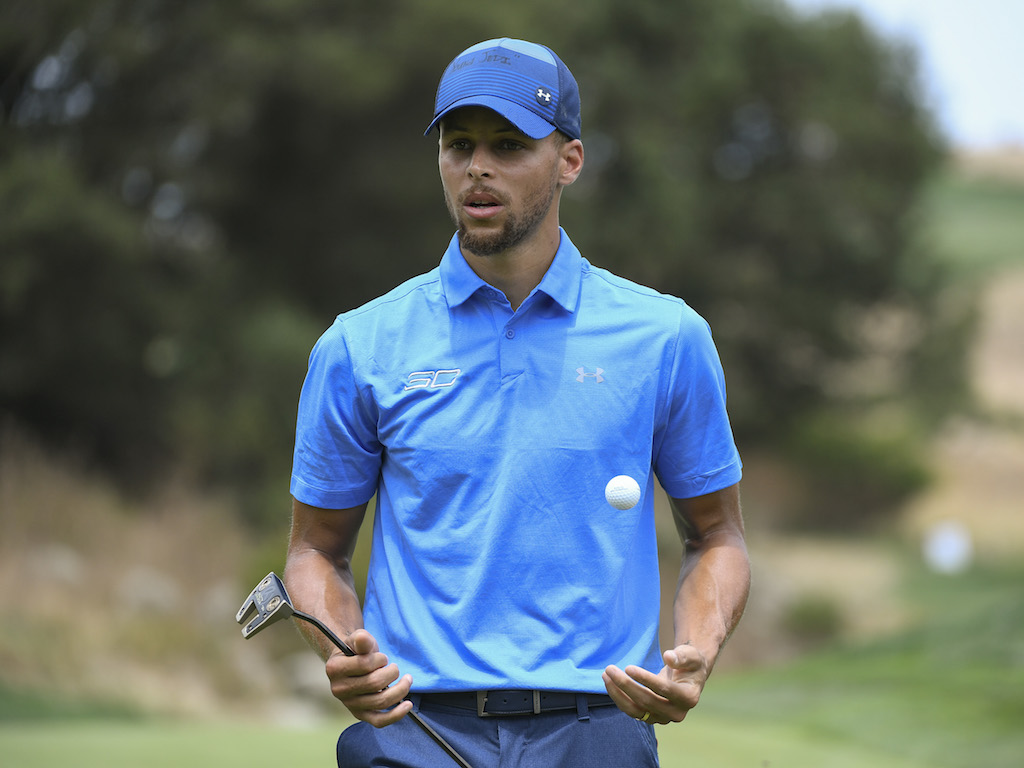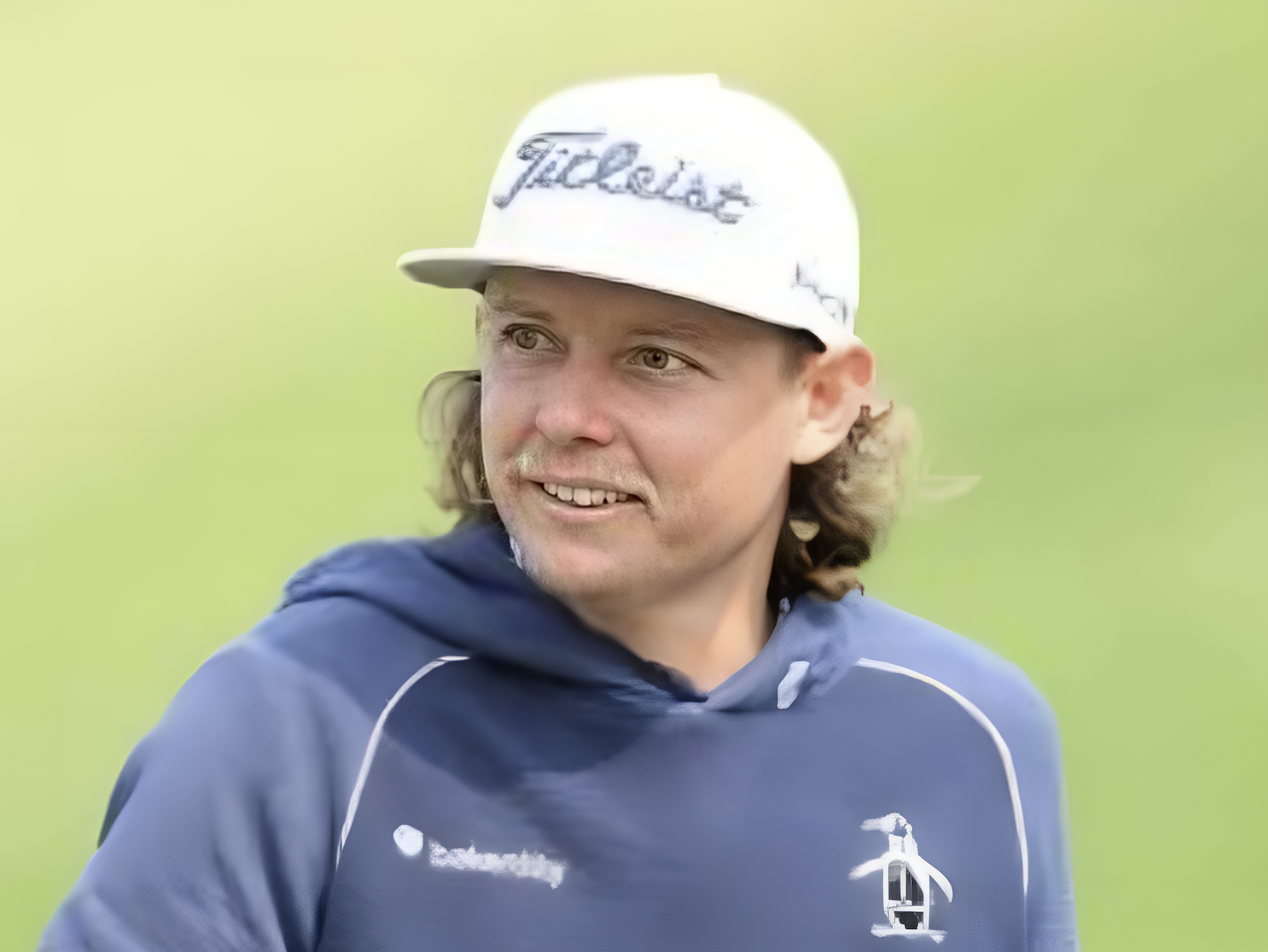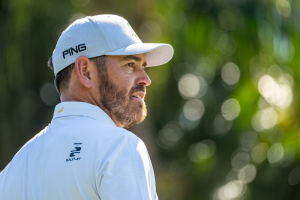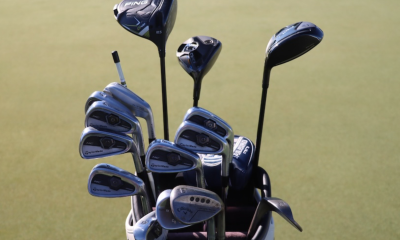Opinion & Analysis
Is specializing in golf necessary to get recruited for a college golf scholarship?

The college golf recruiting process is complicated and often causes undue stress on players and parents, resulting in exhausting financial and emotional resources to secure college placement. Throughout the process, players and parents often attempt to better understand how and why certain players are recruited aggressively while others are often overlooked. To complicate matters, colleges appear to be recruiting players younger and younger, creating an urgency for players to play more competitive, regional and national events at an earlier age.
To help parents, coaches and junior golfers in the process, with the cooperation of the American Junior Golf Association (AJGA), the Golf Coaches Association of America (GCAA) and Dr. Bhrett McCabe, we created a survey for players participating in the AJGA Senior Showcase in Florida. The goal of the survey was to collect information and to help tailor tools to assist players and parents through the collegiate recruiting process.
The online, optional survey created by Dr. McCabe, the AJGA and myself had 8 questions and was sent via email to participants the week of the tournament. The survey was optional. Fifty of the 71 participants in the field completed the survey and spent an average of three minutes. The survey asked players:
- At what age did you first become interested in golf?
- At what age did you play your first 36-hole tournament?
- At what age did you start the college recruitment process?
- What other sports do you play competitively? Please list the sports, as well as the number of years you have participated
- To play Division I golf, do you believe you need to specialize in golf?
- How many hours (in total) do you think you have spent on the college recruitment process?
- How much control do you believe you have over the recruitment process (1= very little, 100=Total Control)
What We Learned about the Participants
In the AJGA Senior Showcase field, the average age to become interested in golf was 9.2 years with 30 percent of golfers starting at 5 years of golf or younger, 54 percent of golfers starting between the ages of 10-14, and 10 percent starting between the ages of 6-9 years old. The average age for the participants first 36-hole tournament was 13.48 years and only 10 percent reported playing a 36-hole event before their 10th birthday. We also know that the average player started the recruitment process early into their junior year and have spent, on average, about 43 hours of time emailing and calling coaches.
What the Data Tells Us
The data highlights that many respondents to the survey were at one-time, multi-sport athletes, and while many started playing young, the average player took a larger interest in golf as they grew older. Nearly 75 percent of the respondents felt it was necessary to specialize in golf to be recruited to play collegiately. In our opinion, this is likely creating a struggle, in that players are transitioning to golf from other sports in their early teenage years, but feel that specialization is necessary for collegiate advancement, particularly in Division I. The perception of successful early specialization only creates greater concern when those that have played longer have early success and separate themselves from the field as compared to those that are learning to play at a prominent level after transitioning in from other sports. When the “optimal recruiting window” is shifting younger and younger, those who do not specialize, but who have enormous potential, may be overlooked, feel greater pressure, or possibly overtrain in order to level the playing field.
Although early commitments often get media attention, there is data to suggest that players still have significant opportunities well into their Senior year of high school. Data collected by reviewing numbers on Junior Golf Scoreboard up to 35 percent of people sign scholarships in the late signing period.
Further, a review of data from previous senior showcases (2013 to present) shows a pattern of winners having opportunities at Major Conference schools with past participants getting opportunities at schools like University of South Florida, Oklahoma State, Ohio State and University of Arkansas to name a few. Overall, since the Senior Showcase concept started in 2012, the AJGA reports a better than 60 percent success rate among all players in these events ending up on a college golf team that next Fall.
Below, please see data on previous Senior Showcase participants, the school they attended and their finish in the showcase.
Boys
2016 (Feb)
- Sebastian Diaz: USF (W)
- Michael Spinger: Coastal Georgia (T3)
- Daniel Faccini: Barry University (10)
2016
- Branden Meyer: South Mountain Comm. College (W)
- Michael Jura: Stanislaus State (T6)
- Eric Duarte: South Mountain Com. College (T10)
2015
- Paul Gunness-Bendetti: Dominican University (W)
- Sam Yamauchi: Cal State Fullerton (6th)
- Newport Laparojkit: University of South Carolina Beaufort (10)
2014
- Colin Hamilton: Oklahoma State (W)
- Noah Lubberding: South Dakota State (5th)
- Blake DiPola: Rhode Island (10th)
2013
- Jeffery Yamaguchi: University of Hawaii Hilo (W)
- Harrison Frye: Coastal Carolina University (W)
- Ty Macias: Dominican University (5th)
- Riley Schank: University of South Carolina Beaufort
Girls
2016
- Elle Otten: University of Colorado (T1, lost in playoff)
- Audrey Kennett: Elon University (T4)
- Staesha Flock: Portland (10)
2015
- Alex Wright: Ohio State (W)
- Noemie Pare: Barry University (5th)
- Marisa Hisaki: Northern Colorado (T8th)
2014
- Hannah Haythorne: Pepperdine (W)
- Claire Carlin: University of Kentucky (5th)
- Ximena Name: Newman University (10th)
2013
- Shu-Lin Lin: Academy of Art (W)
- Alana Uriell: University of Arkansas (6th)
- Kirsten Leigh Campbell: Dallas Baptist University (11th)
Although the population data here is small and likely involves more than just one week of good golf, it does demonstrate that strong results in tournaments after the November signing period can lead junior golfers to fantastic opportunities. The data is also supported by other tournaments, such as Doral where former winners Hurley Long and Ivan Ramirez, both uncommitted before the tournament, signed to play major conference golf at Oregon and Texas Tech, respectively.
It is important to note that for the class of 2015, the NCAA changed the rules on contacts — when coaches are initially allowed to text, call and email recruits. Up until the class of 2015, coaches were not allowed to contact players until July 1 between their Junior and Senior years. Now, coaches can contact Prospective Student Athletes September 1 of their Junior Year. This rule has had significant consequences for recruiting; now coaches can look at players in their junior years and senior years concurrently. Before this rule, it was more likely to have coaches take a player late, because they did not know the potential for future recruits. With the new rule, now coaches are more likely to opt out of late players and put money into the younger player. Coaches rely heavily on ranking to determine fit and when two players are ranked similarly, they are more likely to take the younger player who has more room for development.
Early Specialization
The survey also tells us that 72 percent of participants believe that you must specialize in golf to play Division I golf. Of the data collected, this might be the most significant; clearly young people are getting the message that specialization is necessary if they have dreams of playing Division I golf. This message is understandable; as players see information online which perpetuates the stigma that the best athletes are early developers and have experienced relatively linear development, consistently getting better each year.
Early specialization has gained significant attention over the last few years. In a 2013 American Medical Society for Sports Medicine survey, 88 percent of college athletes who were surveyed played more than one sport as a child. Specialization is continuing to increase, however, despite its reported consequences. In a 2017 TIME article about the growth of the youth sports industry, the industry is estimated to reach beyond $15 billion per year and the pressure to secure college scholarships is only intensifying the specialization urgency. Early experiences in the game of golf were fantastic and in efforts to grow the game, exposing players to positive benefits of the game such as sportsmanship, motor learning, and resiliency, can prepare them for life ahead. It is important that we continue to educate and refine resources to maximize the recruiting process and allow those players ready to compete the opportunity to compete at the school that is right for them. Research done by Dr Neeru Jayanthi of Emory University and associates, suggests early specialization in a single sport is one of the strongest predictors of injury. Athletes in the study who specialized were 70 percent to 93 percent more likely to be injured than children who played multiple sports.
Although some PGA Tour players have significant success at every level like Rory McIlroy and Jordan Speith, many take years to develop their games and represent a comprehensive, longer path to professional success. For instance, I (Brendan Ryan) went to school at Campbell University with PGA Tour player, Brad Fritsch. As a junior at Campbell University in 1998-99, Brad averaged 73.79, which was the 4th best average on the team. As a Senior, he got a half shot worse and averaged 74.32. Today, however, he has played in the U.S. Open, won on the Nationwide Tour, and has earned over $1.2 million as a professional golfer. This story demonstrates that too many parents, coaches and student put emphasis on current results, rather than a commitment to long-term development.
Concluding Thoughts
The data collected in the survey demonstrates participants of the AJGA Senior Showcase are on a very healthy development track which includes playing multiple sports background. Many of these players will go on to play college golf and should be aware with further dedication to the sport have possibilities, if they wish, to pursue golf at the professional level, while others will combine academics and athletics to learn invaluable life skills which will give them advantages as they enter the work force and become tomorrow’s leaders.
References
Jayanthi NA, Pinkham C, Dugas L, Patrick B, LaBella C, “Evidence-Based Recommendations: Counseling the Young Athlete on Sports Specialization,” Journal of Sports Health: A Multidisciplinary Approach, May 2013 5:251-257
- LIKE28
- LEGIT5
- WOW0
- LOL0
- IDHT0
- FLOP1
- OB0
- SHANK2
19th Hole
Vincenzi’s 2024 Zurich Classic of New Orleans betting preview

The PGA TOUR heads to New Orleans to play the 2023 Zurich Classic of New Orleans. In a welcome change from the usual stroke play, the Zurich Classic is a team event. On Thursday and Saturday, the teams play best ball, and on Friday and Sunday the teams play alternate shot.
TPC Louisiana is a par 72 that measures 7,425 yards. The course features some short par 4s and plenty of water and bunkers, which makes for a lot of exciting risk/reward scenarios for competitors. Pete Dye designed the course in 2004 specifically for the Zurich Classic, although the event didn’t make its debut until 2007 because of Hurricane Katrina.
Coming off of the Masters and a signature event in consecutive weeks, the field this week is a step down, and understandably so. Many of the world’s top players will be using this time to rest after a busy stretch.
However, there are some interesting teams this season with some stars making surprise appearances in the team event. Some notable teams include Patrick Cantlay and Xander Schauffele, Rory McIlroy and Shane Lowry, Collin Morikawa and Kurt Kitayama, Will Zalatoris and Sahith Theegala as well as a few Canadian teams, Nick Taylor and Adam Hadwin and Taylor Pendrith and Corey Conners.
Past Winners at TPC Louisiana
- 2023: Riley/Hardy (-30)
- 2022: Cantlay/Schauffele (-29)
- 2021: Leishman/Smith (-20)
- 2019: Palmer/Rahm (-26)
- 2018: Horschel/Piercy (-22)
- 2017: Blixt/Smith (-27)
2024 Zurich Classic of New Orleans Picks
Tom Hoge/Maverick McNealy +2500 (DraftKings)
Tom Hoge is coming off of a solid T18 finish at the RBC Heritage and finished T13 at last year’s Zurich Classic alongside Harris English.
This season, Hoge is having one of his best years on Tour in terms of Strokes Gained: Approach. In his last 24 rounds, the only player to top him on the category is Scottie Scheffler. Hoge has been solid on Pete Dye designs, ranking 28th in the field over his past 36 rounds.
McNealy is also having a solid season. He’s finished T6 at the Waste Management Phoenix Open and T9 at the PLAYERS Championship. He recently started working with world renowned swing coach, Butch Harmon, and its seemingly paid dividends in 2024.
Keith Mitchell/Joel Dahmen +4000 (DraftKings)
Keith Mitchell is having a fantastic season, finishing in the top-20 of five of his past seven starts on Tour. Most recently, Mitchell finished T14 at the Valero Texas Open and gained a whopping 6.0 strokes off the tee. He finished 6th at last year’s Zurich Classic.
Joel Dahmen is having a resurgent year and has been dialed in with his irons. He also has a T11 finish at the PLAYERS Championship at TPC Sawgrass which is another Pete Dye track. With Mitchell’s length and Dahmen’s ability to put it close with his short irons, the Mitchell/Dahmen combination will be dangerous this week.
Taylor Moore/Matt NeSmith +6500 (DraftKings)
Taylor Moore has quickly developed into one of the more consistent players on Tour. He’s finished in the top-20 in three of his past four starts, including a very impressive showing at The Masters, finishing T20. He’s also finished T4 at this event in consecutive seasons alongside Matt NeSmith.
NeSmith isn’t having a great 2024, but has seemed to elevate his game in this format. He finished T26 at Pete Dye’s TPC Sawgrass, which gives the 30-year-old something to build off of. NeSmith is also a great putter on Bermudagrass, which could help elevate Moore’s ball striking prowess.
- LIKE8
- LEGIT3
- WOW1
- LOL1
- IDHT0
- FLOP3
- OB1
- SHANK2
19th Hole
Vincenzi’s 2024 LIV Adelaide betting preview: Cam Smith ready for big week down under

After having four of the top twelve players on the leaderboard at The Masters, LIV Golf is set for their fifth event of the season: LIV Adelaide.
For both LIV fans and golf fans in Australia, LIV Adelaide is one of the most anticipated events of the year. With 35,000 people expected to attend each day of the tournament, the Grange Golf Club will be crawling with fans who are passionate about the sport of golf. The 12th hole, better known as “the watering hole”, is sure to have the rowdiest of the fans cheering after a long day of drinking some Leishman Lager.
The Grange Golf Club is a par-72 that measures 6,946 yards. The course features minimal resistance, as golfers went extremely low last season. In 2023, Talor Gooch shot consecutive rounds of 62 on Thursday and Friday, giving himself a gigantic cushion heading into championship Sunday. Things got tight for a while, but in the end, the Oklahoma State product was able to hold off The Crushers’ Anirban Lahiri for a three-shot victory.
The Four Aces won the team competition with the Range Goats finishing second.
*All Images Courtesy of LIV Golf*
Past Winners at LIV Adelaide
- 2023: Talor Gooch (-19)
Stat Leaders Through LIV Miami
Green in Regulation
- Richard Bland
- Jon Rahm
- Paul Casey
Fairways Hit
- Abraham Ancer
- Graeme McDowell
- Henrik Stenson
Driving Distance
- Bryson DeChambeau
- Joaquin Niemann
- Dean Burmester
Putting
- Cameron Smith
- Louis Oosthuizen
- Matt Jones
2024 LIV Adelaide Picks
Cameron Smith +1400 (DraftKings)
When I pulled up the odds for LIV Adelaide, I was more than a little surprised to see multiple golfers listed ahead of Cameron Smith on the betting board. A few starts ago, Cam finished runner-up at LIV Hong Kong, which is a golf course that absolutely suits his eye. Augusta National in another course that Smith could roll out of bed and finish in the top-ten at, and he did so two weeks ago at The Masters, finishing T6.
At Augusta, he gained strokes on the field on approach, off the tee (slightly), and of course, around the green and putting. Smith able to get in the mix at a major championship despite coming into the week feeling under the weather tells me that his game is once again rounding into form.
The Grange Golf Club is another course that undoubtedly suits the Australian. Smith is obviously incredibly comfortable playing in front of the Aussie faithful and has won three Australian PGA Championship’s. The course is very short and will allow Smith to play conservative off the tee, mitigating his most glaring weakness. With birdies available all over the golf course, there’s a chance the event turns into a putting contest, and there’s no one on the planet I’d rather have in one of those than Cam Smith.

Louis Oosthuizen +2200 (DraftKings)
Louis Oosthuizen has simply been one of the best players on LIV in the 2024 seas0n. The South African has finished in the top-10 on the LIV leaderboard in three of his five starts, with his best coming in Jeddah, where he finished T2. Perhaps more impressively, Oosthuizen finished T7 at LIV Miami, which took place at Doral’s “Blue Monster”, an absolutely massive golf course. Given that Louis is on the shorter side in terms of distance off the tee, his ability to play well in Miami shows how dialed he is with the irons this season.
In addition to the LIV finishes, Oosthuizen won back-to-back starts on the DP World Tour in December at the Alfred Dunhill Championship and the Mauritus Open. He also finished runner-up at the end of February in the International Series Oman. The 41-year-old has been one of the most consistent performers of 2024, regardless of tour.
For the season, Louis ranks 4th on LIV in birdies made, T9 in fairways hit and first in putting. He ranks 32nd in driving distance, but that won’t be an issue at this short course. Last season, he finished T11 at the event, but was in decent position going into the final round but fell back after shooting 70 while the rest of the field went low. This season, Oosthuizen comes into the event in peak form, and the course should be a perfect fit for his smooth swing and hot putter this week.

- LIKE12
- LEGIT3
- WOW1
- LOL1
- IDHT0
- FLOP1
- OB1
- SHANK1
Opinion & Analysis
The Wedge Guy: What really makes a wedge work? Part 1

Of all the clubs in our bags, wedges are almost always the simplest in construction and, therefore, the easiest to analyze what might make one work differently from another if you know what to look for.
Wedges are a lot less mysterious than drivers, of course, as the major brands are working with a lot of “pixie dust” inside these modern marvels. That’s carrying over more to irons now, with so many new models featuring internal multi-material technologies, and almost all of them having a “badge” or insert in the back to allow more complex graphics while hiding the actual distribution of mass.
But when it comes to wedges, most on the market today are still single pieces of molded steel, either cast or forged into that shape. So, if you look closely at where the mass is distributed, it’s pretty clear how that wedge is going to perform.
To start, because of their wider soles, the majority of the mass of almost any wedge is along the bottom third of the clubhead. So, the best wedge shots are always those hit between the 2nd and 5th grooves so that more mass is directly behind that impact. Elite tour professionals practice incessantly to learn to do that consistently, wearing out a spot about the size of a penny right there. If impact moves higher than that, the face is dramatically thinner, so smash factor is compromised significantly, which reduces the overall distance the ball will fly.
Every one of us, tour players included, knows that maddening shot that we feel a bit high on the face and it doesn’t go anywhere, it’s not your fault.
If your wedges show a wear pattern the size of a silver dollar, and centered above the 3rd or 4th groove, you are not getting anywhere near the same performance from shot to shot. Robot testing proves impact even two to three grooves higher in the face can cause distance loss of up to 35 to 55 feet with modern ‘tour design’ wedges.
In addition, as impact moves above the center of mass, the golf club principle of gear effect causes the ball to fly higher with less spin. Think of modern drivers for a minute. The “holy grail” of driving is high launch and low spin, and the driver engineers are pulling out all stops to get the mass as low in the clubhead as possible to optimize this combination.
Where is all the mass in your wedges? Low. So, disregarding the higher lofts, wedges “want” to launch the ball high with low spin – exactly the opposite of what good wedge play requires penetrating ball flight with high spin.
While almost all major brand wedges have begun putting a tiny bit more thickness in the top portion of the clubhead, conventional and modern ‘tour design’ wedges perform pretty much like they always have. Elite players learn to hit those crisp, spinny penetrating wedge shots by spending lots of practice time learning to consistently make contact low in the face.
So, what about grooves and face texture?
Grooves on any club can only do so much, and no one has any material advantage here. The USGA tightly defines what we manufacturers can do with grooves and face texture, and modern manufacturing techniques allow all of us to push those limits ever closer. And we all do. End of story.
Then there’s the topic of bounce and grinds, the most complex and confusing part of the wedge formula. Many top brands offer a complex array of sole configurations, all of them admittedly specialized to a particular kind of lie or turf conditions, and/or a particular divot pattern.
But if you don’t play the same turf all the time, and make the same size divot on every swing, how would you ever figure this out?
The only way is to take any wedge you are considering and play it a few rounds, hitting all the shots you face and observing the results. There’s simply no other way.
So, hopefully this will inspire a lively conversation in our comments section, and I’ll chime in to answer any questions you might have.
And next week, I’ll dive into the rest of the wedge formula. Yes, shafts, grips and specifications are essential, too.
- LIKE34
- LEGIT7
- WOW1
- LOL1
- IDHT2
- FLOP3
- OB1
- SHANK3
-

 19th Hole2 weeks ago
19th Hole2 weeks agoDave Portnoy places monstrous outright bet for the 2024 Masters
-

 19th Hole4 days ago
19th Hole4 days agoJustin Thomas on the equipment choice of Scottie Scheffler that he thinks is ‘weird’
-

 19th Hole2 weeks ago
19th Hole2 weeks agoTiger Woods arrives at 2024 Masters equipped with a putter that may surprise you
-

 19th Hole4 days ago
19th Hole4 days ago‘Absolutely crazy’ – Major champ lays into Patrick Cantlay over his decision on final hole of RBC Heritage
-

 19th Hole2 weeks ago
19th Hole2 weeks agoTwo star names reportedly blanked Jon Rahm all week at the Masters
-

 19th Hole1 week ago
19th Hole1 week agoReport: LIV Golf identifies latest star name they hope to sign to breakaway tour
-

 19th Hole2 weeks ago
19th Hole2 weeks agoNeal Shipley presser ends in awkward fashion after reporter claims Tiger handed him note on 8th fairway
-

 19th Hole1 week ago
19th Hole1 week agoBrandel Chamblee has ‘no doubt’ who started the McIlroy/LIV rumor and why
















bill
Mar 10, 2018 at 2:00 pm
You can’t think yourself into a golf swing… as most adult beginners seem to believe. You gotta start when you are a pre-teen and then play in an organized club environment.
Even adult athletes from other sports cannot conquer the game with an aged swing. You gotta be hard wired from childhood to make the golfswing a natural part of your neuro-muscular system and brain. Why? Because the golfswing is unnatural for the human body.